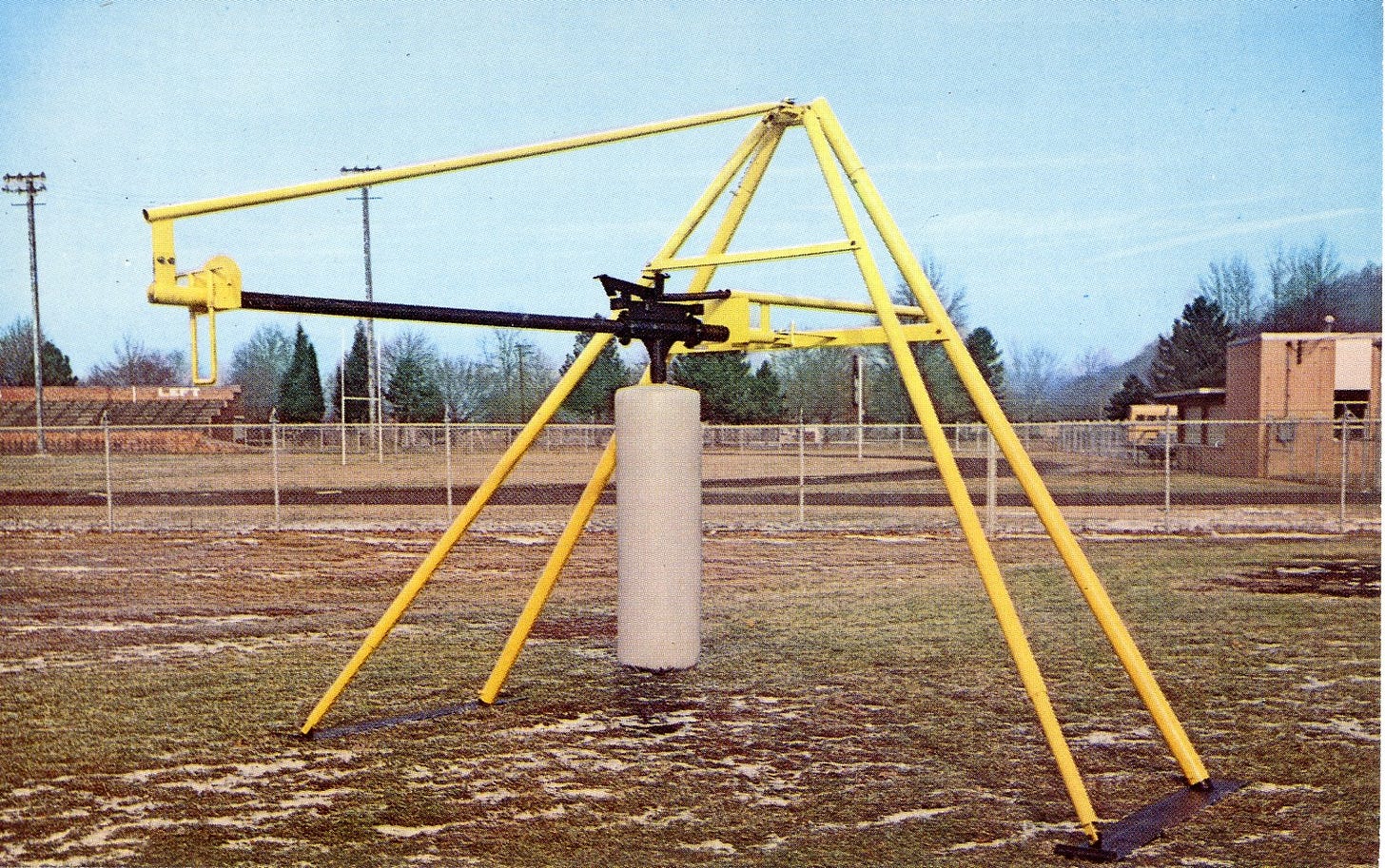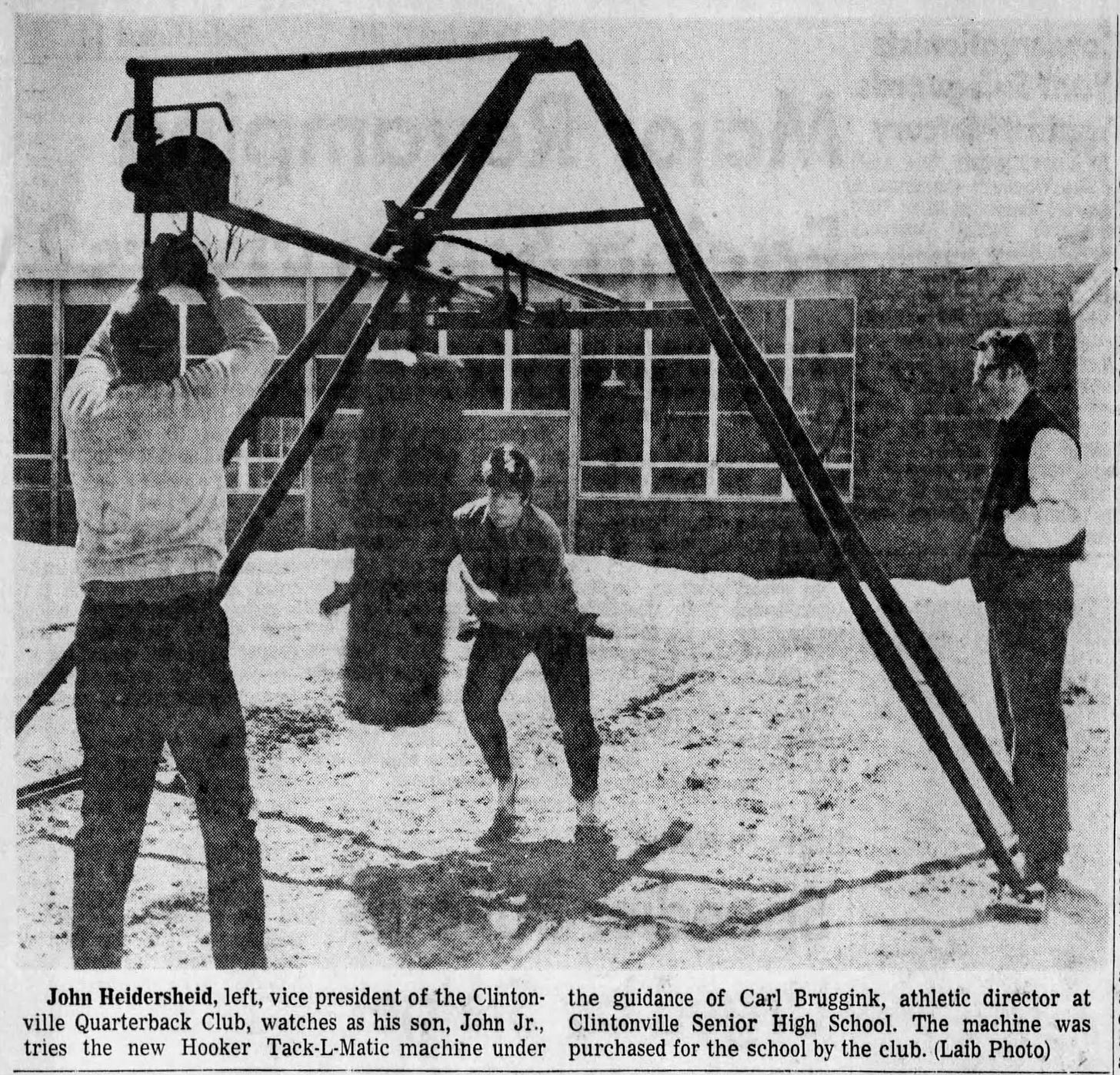Today's Tidbit... Pushing Back On The Hooker Tack-L-Matic
One of the problems with the early tackling dummies was that they are inanimate, so coaches hung them from frameworks and manipulated ropes or chains to swing them about. Try as they might, coaches could not reliably simulate an opponent coming at a player with force.
Verne Hooker heard that problem expressed by the Ulrichsville (OH) high school coach in 1956 and set to work solving that problem, though a bit slowly. It took ten years of development, but his Tack-L-Matic finally hit the market. Promoted at clinics and via side gigs by a network of coaches, the Tack-L-Matic was well-received and soon found homes on NFL, colleges, and high school practice fields nationwide. Vince Lombardi was skeptical of Hooker’s machine. Still, he became a convert because the Tack-L-Matic simulated the movement of a ball carrier or blocker better than any piece of equipment that came before it.

Here's how it worked. First, the dummy hung at the end of a rail supported by a large quadripod. Pushing the dummy to the end of the spring-loaded rail that extended from the quadripod caused it to become cocked. Once cocked, the coach triggered the device, sending the dummy speeding along the rail. (The speed and force depended on the number of springs engaged.) In addition, the rail pivoted from the top of the quadripod, allowing the coach to swing the rail to alter the angle at which the dummy approached the player.
The Tack-L-Matic was best suited for tackling drills, but it worked well for any number of blocking drills, including simulating trap blocks. (Full disclosure: The author's college had a Tack-L-Matic with a faded maroon dummy. We had no idea of the brand name and affectionately called it The Big Red Dildo.)
During its time, the company also developed the Block-R-Matic, which consisted of five dummies on rails spaced a yard apart, allowing a full offensive line to drive into it while ensuring each player drove their dummy independently. Hooker also developed a smaller, gentler version of the Tack-L-Matic for Pop Warner football.
However, the 1970s saw numerous lawsuits filed against football equipment manufacturers when players suffered injuries while using their products. For example, after a high school player head-butted the Tack-L-Matic dummy and was injured, Hooker was among those sued. The company settled out of court, but the legal landscape made the football equipment business increasingly unattractive.

The formation of the National Operating Committee on Standards for Athletic Equipment (NOCSAE) in 1970 led to increased safety requirements and the formal testing of football equipment, leading many to drop out of the market. For example, the R&D required to design and manufacture proper helmets led to helmet manufacturer numbers dropping from twenty-one in 1970 to three by 1983. Likewise, an NCAA committee studying player and practice equipment recommended against "self-propelled" tackling devices. The combination of factors led to Hooker Tack-L-Matic ceasing operations in 1975.
Like other such contraptions, the machines remained in use here and there. Still, the old soldiers faded away, so it is likely that many readers were unaware of the Tack-L-Matic's existence until reading this Tidbit.
Football Archaeology is reader-supported. Click here to buy one of my books or otherwise support the site.


